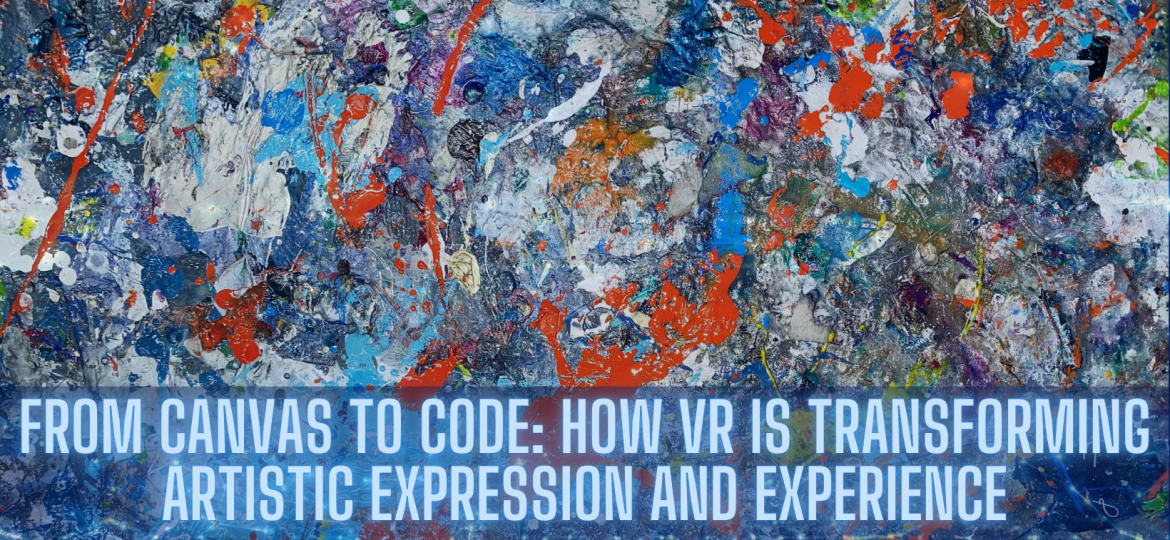
For as long as VR technology has been available outside of labs and research establishments, artists have been fascinated with the possibilities of presenting their ideas in new, immersive dimensions. Art, even within the confines of a 2d canvas, has often sought to transport the viewer – to be immersive in other words. With sculpture, performance, installation and many other artforms, artists have sought to further immersion for the viewer, sometimes also adding elements of interactivity. So it is unsurprising that practitioners of contemporary art would be keen to explore the possibilities of VR.
People can experience VR art in galleries, or alternatively, platforms exist that allow viewers to visit galleries and exhibitions using their own headset in the comfort of their own homes. VR tours offer an excellent way for people to experience art that they would otherwise not get to see due to travel or budget constraints. In the future, VR could also provide a way for people to experience artworks that are too delicate for public display or need specialist storage conditions for other reasons. The great collections of art of the world have countless pieces hidden away in basements and storerooms. Could VR be utilised to bring these works to new audiences?
In contemporary art, VR is not just a tool for displaying existing works but is also a medium for new forms of artistic expression. Artists like Cao Fei and Gohar Martirosyan have explored VR to delve into complex themes such as identity and social critique, breaking free from the constraints of physical space and materiality. This technology enables artists to create immersive experiences that challenge the viewer’s perception and provoke thought on the implications of digital realities. As VR continues to evolve, it promises to redefine the boundaries of contemporary art and how we engage with it
Not all artists working in the VR medium consider it to be a positive or even neutral aspect to bring to an art piece. Some artists have used VR to make artworks that show that rather than immersion, VR can cause the viewer to experience alienation, homogenisation, brutalisation and the loss of empathy. This article attempts to explorer the differing attitudes of contemporary artists using the medium of VR – whether they are interested in it from the point of view of innovation and further engagement with audiences, or bringing a critical gaze to how technology can have a dehumanising aspect.
Virtual reality is also transforming how creative enthusiasts and aspiring artists approach their work, allowing them to create immersive and interactive experiences that were once out of reach. As VR technology continues to advance, so do the tools available to these creators. Here are some of the best tools for VR painting, sculpting, and 3D modelling.
Tilt Brush – Tilt Brush is a popular VR painting tool that allows users to paint in 3D space using a variety of brushes and colours. With Tilt Brush, you can create stunning, immersive works of art that can be experienced in VR. Many artists have praised Tilt Brush for its ease of use and the ability to create large-scale art installations that can be experienced in VR galleries worldwide.
Gravity Sketch – Gravity Sketch is a 3D modelling tool that allows you to create complex designs and models in VR. With a range of powerful tools and features, Gravity Sketch is ideal for product designers, architects, and anyone who needs to create precise, detailed models.
Medium – Medium is a VR sculpting tool that lets you create 3D models with your hands, using intuitive hand gestures and the Oculus Touch controllers. With Medium, you can create anything from simple shapes to intricate sculptures with stunning detail.
While Tilt Brush excels in creating painterly environments, Gravity Sketch is ideal for precise, industrial design applications. Medium’s strength lies in its natural sculpting interface, making it perfect for organic forms.
Quill – Quill is a VR painting and animation tool that lets you create 3D paintings and animations in a completely immersive environment. With Quill, you can create stunning works of art that can be experienced in VR, on mobile devices, or on the web.
Blender – Blender is a powerful, open-source 3D modelling and animation tool that supports VR. With Blender, you can create everything from simple objects to complex animations and simulations. It’s no secret that we at Mersus Technologies love Blender. We recommend learning it to most of our students because its usage is so broad, across a range of creative and artistic uses.
Unity – Unity is a popular game engine that supports VR and enables you to create interactive, immersive experiences for a range of platforms. With Unity, you can create VR experiences that include 3D models, animations, physics simulations, and more.
Whether you’re a professional artist, designer, or hobbyist, these tools can help you unleash your creativity in the world of virtual reality. With their intuitive interfaces and powerful features, they make it possible to transcend the limitations of traditional mediums, allowing you to experiment with new forms of expression and interactivity. VR not only enables the creation of stunning, three-dimensional works of art but also offers the ability to craft entire immersive worlds where your audience can engage with your creations in ways previously unimaginable. Or, as we have seen, artists can use VR to explore darker themes of human alienation in ways that were previously not possible.
As virtual reality continues to evolve, these tools will empower you to push the boundaries of what is possible, whether you’re painting, sculpting, or modelling in 3D. Your work can become a fully immersive experience, breaking free from the constraints of physical space and inviting others to explore your art from the inside out. In this way, VR is not just a tool but a gateway to entirely new artistic possibilities that will captivate and inspire.